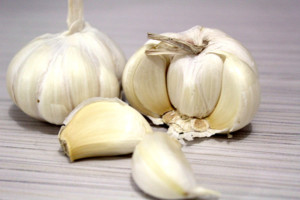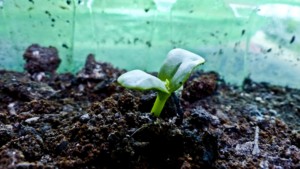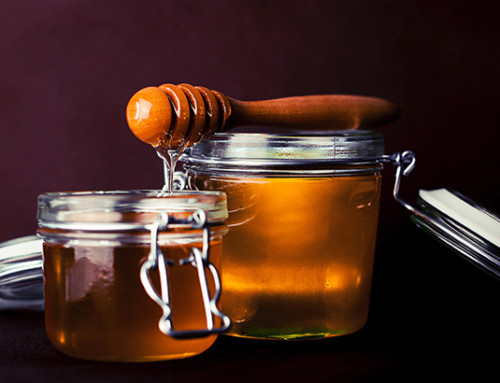A while back, we shared some information about LaMotte’s new BioPaddle Microbe Hunter Activity kits. At the time, they had two kits available, one that focused on Milk and one that focused on Surfaces. We are very excited to share that they have since released three more kits!
In the past, we’ve been blown away by LaMotte’s creative kits and apps for use with dipslides. They continue to impress us with the development of new activities and experiments. Today, let’s take a look at their new Microbe Hunter Activities.
STEM

Let’s quickly recap what STEM is. STEM is common terminology these days, and it’s an important factor for teachers choosing what products and activities they’re going to pursue during the school year. LaMotte offers STEM-based activities in many different areas of their Science Education catalog, including BioPaddles®.
The Microbe Hunter activities guide junior high and high school level students through culturing and presumptive identification of common microbes on BioPaddles®. Students apply science, technology, engineering and math concepts to the exploration of microbes that they encounter every day. The activities develop critical thinking skills and emphasize engineering as a key component.
So what are these activities?
Currently, they have Milk, Surface, Food, Air, and Soil Microbe Hunter Activities available. Rumor has it, they may even add a Water Microbe Hunter Activity. Our last post explained the Milk and Surface activities, so let’s look at the newly released kits, and what they have to offer.
Food Microbe Hunter
 With Food Microbe Hunter, students determine what factors affect microbe growth in food by designing experiments to control intrinsic and extrinsic factors, predict the probability of microbe growth on foods, and design an experiment to prove their hypothesis about the preservative effects of pickling. Activities and topics include identification of microbes in and on food, food spoilage, moisture equilibrium, water activity, nutrients, and food as an ecosystem. STEM extension activities include evaluating the effectiveness of garlic as an antimicrobial agent and the demonstration of Koch’s Postulate.
With Food Microbe Hunter, students determine what factors affect microbe growth in food by designing experiments to control intrinsic and extrinsic factors, predict the probability of microbe growth on foods, and design an experiment to prove their hypothesis about the preservative effects of pickling. Activities and topics include identification of microbes in and on food, food spoilage, moisture equilibrium, water activity, nutrients, and food as an ecosystem. STEM extension activities include evaluating the effectiveness of garlic as an antimicrobial agent and the demonstration of Koch’s Postulate.
Students will design a colony counting sampling method to test for microbial contamination of food surfaces. They’ll identify food-borne microbes, learn about the kinds of microbes living on fruits and vegetables, what happens if certain foods are left out without refrigeration and more.
The kit contains expandable and adaptable activities. Students learn a bit of background information at the start of each activity, so student teams can go on to design their own experiments.
LaMotte has included a CD-ROM with the kit containing Student and Teacher Guides with PowerPoint presentations, ID Guides, resources, links and more. And once again, the LaMotte BioPaddle apps can be used with this activity.
Air Microbe Hunter
 With Air Microbe Hunter, students predict which environmental conditions are favorable to airborne microbes and then propose and carry out a strategy to collect airborne microbes using passive sampling techniques. Students construct and calibrate an impact sampler to sample an airspace and determine airborne microbe contaminate levels. Activities and topics include the presumptive identification of airborne microbes, bioaerosols, cloud chemistry and precipitation, bacterial ice nucleators, and airborne diseases. STEM extension activities include How Did Fungus Get Into King Tut’s Tomb? and Dust and Dust Bunnies.
With Air Microbe Hunter, students predict which environmental conditions are favorable to airborne microbes and then propose and carry out a strategy to collect airborne microbes using passive sampling techniques. Students construct and calibrate an impact sampler to sample an airspace and determine airborne microbe contaminate levels. Activities and topics include the presumptive identification of airborne microbes, bioaerosols, cloud chemistry and precipitation, bacterial ice nucleators, and airborne diseases. STEM extension activities include How Did Fungus Get Into King Tut’s Tomb? and Dust and Dust Bunnies.
Students will design an indoor air monitoring method to achieve a consistent way of counting airborne fungi and bacterial cells. They’ll identify airborne molds, conditions at home that support mold growth, estimate mold levels by sampling air and more.
All Microbe Hunter kits following the same format (include CD-ROM with resources for each activity).
Soil Microbe Hunter
 Finally, with Soil Microbe Hunter, students research the process of soil formation, soil characteristics, and the influence of environmental conditions on soil microbe populations. Students assess and sample various soil ecosystems using the surface contact impression technique, dilution technique, root wash technique, and the Rossi-Cholodny buried slide contact transfer technique. Microbes are identified and enumerated to calculate microbial diversity.
Finally, with Soil Microbe Hunter, students research the process of soil formation, soil characteristics, and the influence of environmental conditions on soil microbe populations. Students assess and sample various soil ecosystems using the surface contact impression technique, dilution technique, root wash technique, and the Rossi-Cholodny buried slide contact transfer technique. Microbes are identified and enumerated to calculate microbial diversity.
Activities and topics include the effect of fertilizer on lawn microbe populations, rhizosphere ecosystems, biological soil crusts, and biopesticides. STEM extension activities include Is There Such a Thing as Sterile Soil?, Investigating Soil Inoculants and Soil Crust Hunt.
Students will design a monitoring method for soil sampling using the BioPaddle that compares the density of ‘open soil microbes’ to those near plant root systems. They’ll identify soil microbes, learn about microbe populations in different types of soil and more.
By testing their everyday surroundings, students will begin to learn about some of the microbes they come in contact with every day. It’s obvious the Microbe Hunter Activities are going to be a hit with both students and teachers. We love these kits and all of the fun activities!
Visit www.lamotte.com for more information on BioPaddles®, and have fun culturing those microbes!







Leave A Comment